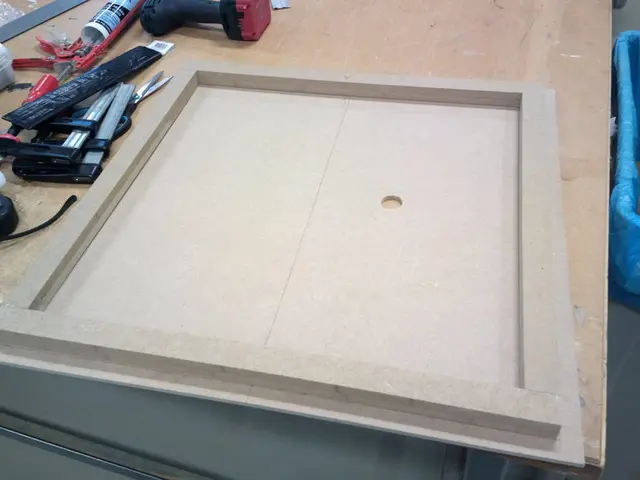Boost Efficiency: 5 Strategies for Accelerating a Home Renovation Project as a Construction Professional
In the world of home renovation, contractors are constantly seeking ways to speed up projects without compromising on style and craftsmanship. By focusing on four key areas - efficient planning and project management, skilled workforce and subcontractor collaboration, streamlined material procurement and delivery, and technology integration - contractors can effectively streamline their workflows, ensuring timely execution of each renovation step.
**Efficient Planning and Project Management**
One of the most crucial aspects of a successful renovation project is meticulous planning. By organising the renovation into clear, manageable phases, such as pre-construction, demolition, structural work, finishes, and final inspections, contractors can effectively monitor progress and control costs. Utilising project management tools or timelines like Gantt charts or apps (Trello, Asana, Buildertrend) further aids in organising tasks, deadlines, materials delivery, and inspections, minimising delays and avoiding trade bottlenecks.
Scheduling permits and inspections well in advance is also vital to prevent hold-ups, as many jurisdictions have backlogs. Implementing critical path and project evaluation techniques (like PERT) can help identify and prioritise tasks crucial to timeline adherence, ensuring that these are completed first to reduce overall project duration. Continuous progress monitoring and adaptive planning ensure that quality and timelines remain aligned throughout the project.
**Skilled Workforce and Subcontractor Collaboration**
Assigning the right skilled workers and subcontractors to each task and ensuring they are well-coordinated and understand the project scope and deadlines is essential. Maintaining clear communication channels between all parties, whether through text, email, or project apps, helps share daily updates, avoid misunderstandings, and quickly resolve issues.
Collaboration among subcontractors is key to prevent inefficient overlapping of work, respecting the proper sequence of tasks (like plumbing before electrical, then drywall) to prevent rework. By fostering a collaborative environment, contractors can ensure that each subcontractor understands their role and responsibilities, leading to a smoother workflow.
**Streamlined Material Procurement and Delivery**
Planning material orders carefully and coordinating delivery schedules to match project phases is crucial for reducing onsite clutter and downtime waiting for supplies. Working with reliable suppliers and using project management systems to track procurement status in real time allows timely adjustments if delays occur. Avoiding last-minute changes that can disrupt timelines and increase costs is also recommended, with material availability incorporated into the initial project planning.
**Technology Integration and Digital Tools**
Utilising digital project management platforms to centralise schedules, documentation, communication, and budgeting increases transparency and efficiency. Employing mobile apps for onsite updates enables real-time progress tracking, inspection reports, and immediate flagging of issues to keep the project on track.
Design visualisation and BIM (Building Information Modeling) tools help ensure style and craftsmanship details are clear and reduce misinterpretations that could cause rework. By integrating technology into their workflows, contractors can enhance project efficiency by streamlining communication, improving accuracy, and enhancing collaboration among team members.
In conclusion, by combining disciplined planning, leveraging skilled labor with effective coordination, ensuring timely material management, and integrating technology for real-time oversight, contractors can accelerate renovation projects without sacrificing quality or design integrity.
- The efficient planning phase in a renovation project involves organising the renovation into clear stages, such as pre-construction, demolition, structural work, finishes, and final inspections, utilizing project management tools to aid in task organisation, deadlines, material delivery, and inspections.
- Implementing critical path and project evaluation techniques, like PERT, can help identify and prioritise tasks crucial to timeline adherence, ensuring that these are completed first to reduce overall project duration.
- Maintaining clear communication between all parties, whether through project apps, email, or text, is essential to share daily updates, avoid misunderstandings, and quickly resolve issues.
- By integrating technology into their workflows, contractors can enhance project efficiency by streamlining communication, improving accuracy, and enhancing collaboration among team members, using digital project management platforms, mobile apps for onsite updates, design visualisation, and BIM tools.
- Timely material management is crucial for reducing onsite clutter and downtime, with planning material orders carefully, coordinating delivery schedules to match project phases, using project management systems to track procurement status, and avoiding last-minute changes that can disrupt timelines and increase costs.







